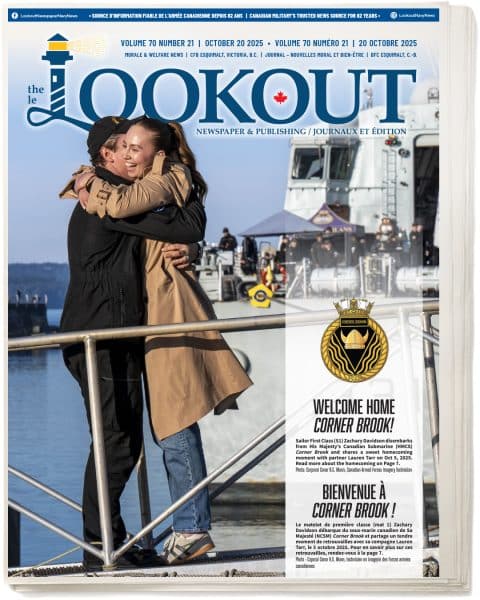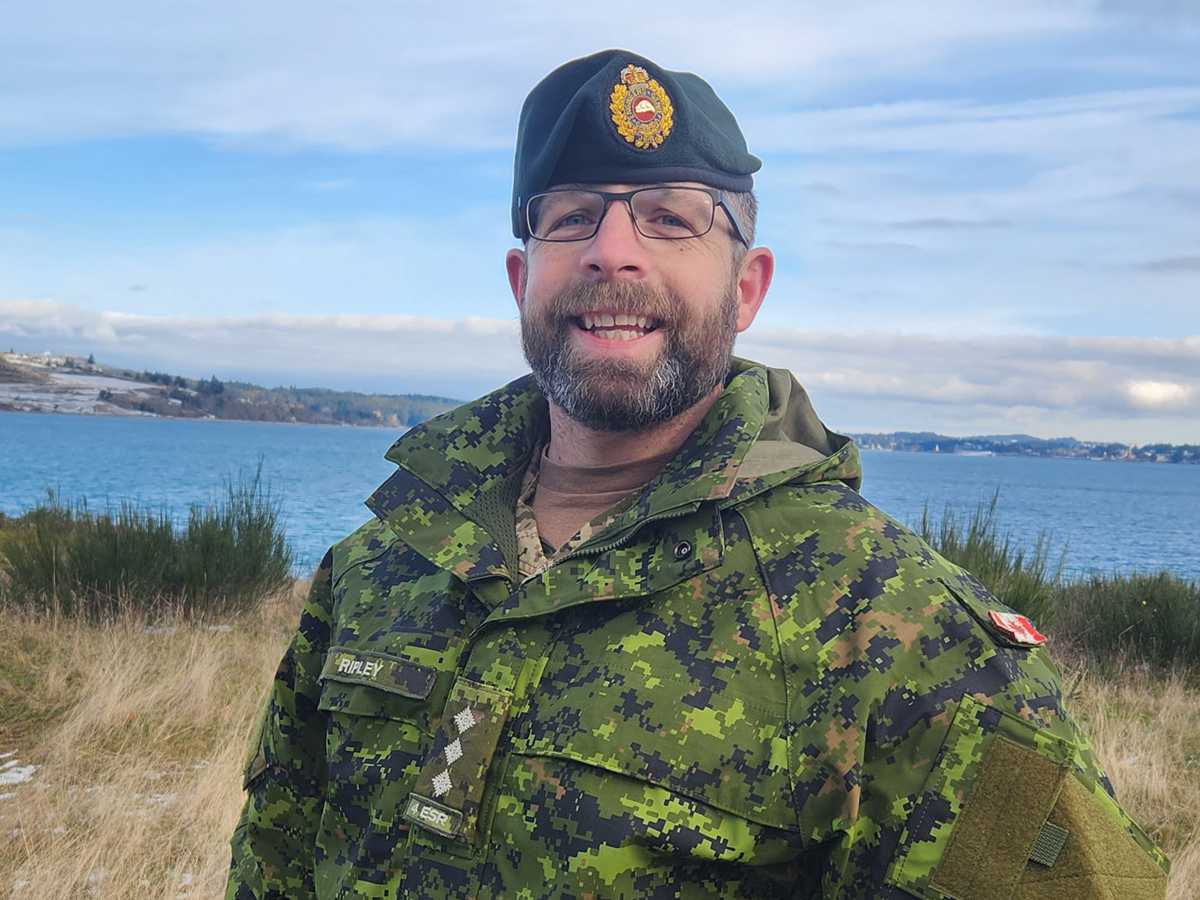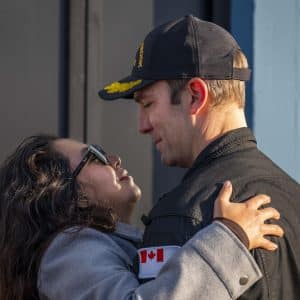Canadian and Latvian Divers Jump From CH-148 Cyclone in High-Stakes Helocasting
Jazmin Holdway with contributions by Andrea Modesto
Lookout Newspaper
Canadian combat engineer diving specialists (combat divers) from Gagetown, Valcartier, Petawawa, and Edmonton joined forces with port inspection divers from three Naval Reserve divisions and Latvian divers to train in this year’s iteration of Exercise Roguish Buoy, the Canadian Army’s only collective dive exercise held this year between Jan. 20 and Feb. 15 at CFB Albert Head in Metchosin, B.C.
Helocasting is an insertion technique used when land access is not readily available and involves dispatching divers from a helicopter into the water to conduct operations such as area search and obstacle clearance, according to Master Corporal (MCpl) Mark Suffoletta, a member from 2 Combat Engineer Regiment based in Petawawa, Ont. who was involved in the exercise. He explained how crucial this training opportunity is for combat divers, preparing them for real-world scenarios in which the mobility of friendly forces is at stake.
“What I like to say is we’re combat engineers underwater, so we do all the capabilities that combat engineers do, but below the surface,” he said. “When we say obstacle clearance, that’s clearing debris and anything that may impede our forces from coming in.”
Captain (Capt) Willis Ripley, exercise director for Roguish Buoy 2025, highlighted the value of training in such dynamic environments.
“Helocasting is just one tool in our toolbox,” he said. “It allows us to get members into the water in austere situations where traditional transport isn’t an option. This skillset could be used in scenarios like mine-clearing operations, obstacle removal, or responding to a crash in a remote area.”
The exercise tested critical combat engineering capabilities by placing dive teams in a multitude of scenarios including search and recovery of sunken equipment, clearing shorelines from the potential threat of unexploded ordnance, underwater demolition and obstacle reduction to create or improve bridge heads for the movement of friendly forces.
MCpl Suffoletta described his experience jumping from the CH-148 Cyclone helicopter and emphasized the importance of safety protocols when hitting the water, including keeping control of his gear, signaling to the helicopter crew, and forming a circle with fellow divers while awaiting pickup.
“The first thing you taste is salt water, but once you surface, you give a thumbs-up to let the crew know you’re okay,” he said. “Then you link up with your team and wait for extraction.”
One of the most notable aspects of Ex Roguish Buoy was its international component. Latvian clearance divers joined Canadian combat divers from across the country to share techniques and enhance interoperability among NATO allies.
Corporal (Cpl) Artur Skronbergis of the Latvian Navy Diving Team was excited about the opportunity. “Exercises like these give us a chance to exchange experiences and broaden our horizons on how each nation approaches diving operations,” he said.
For the Latvian team, this training marks their first time in Canada for most of them.
“It’s been amazing so far,” Cpl Skronbergis said. “We even got a chance to explore Victoria—we are still on the hunt for some beaver tails!”
The exercise culminated with a final evaluation that saw multiple dive teams along with their equipment being inserted into the area of a reported helicopter crash site. Testing their full range of capabilities in a high-stakes environment while also affirming the skills practiced throughout the exercise, the teams successfully conducted an area search and eventual recovery of the mock casualties and airframe.
With Roguish Buoy completing its 46th iteration, the value of such training is undeniable.
“There’s always something new to learn,” Capt. Ripley noted. “The exchange of knowledge with our NATO partners, along with the support from the Royal Canadian Navy, Naval Reserve and Royal Canadian Air Force, has been phenomenal.”
As these highly trained combat engineers continue refining their underwater expertise, exercises like Roguish Buoy ensure they remain ready to approach the unpredictable challenges of real-world operations.
Not to mention the fact the training is also fun. When asked what the divers do while waiting for the final pick-up after jumping from the helicopter into the ocean, MCpl Suffoletta said, “we fist bump and say, ‘how awesome was that?’”

Canadian combat divers testing their skills with Naval Reserve and Latvian divers during Exercise Roguish Buoy in Metchosin, B.C. between Jan. 20 and Feb. 15.
Photos: Andrea Modesto, Lookout Newspaper









